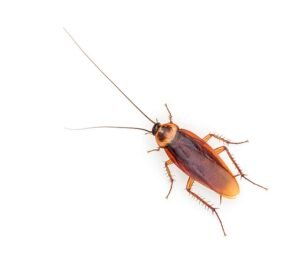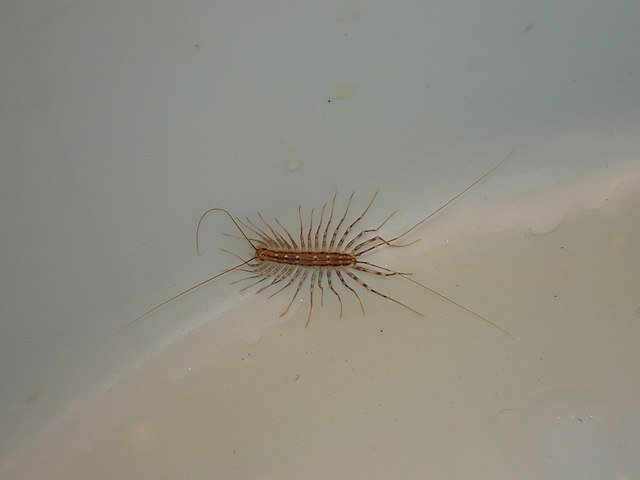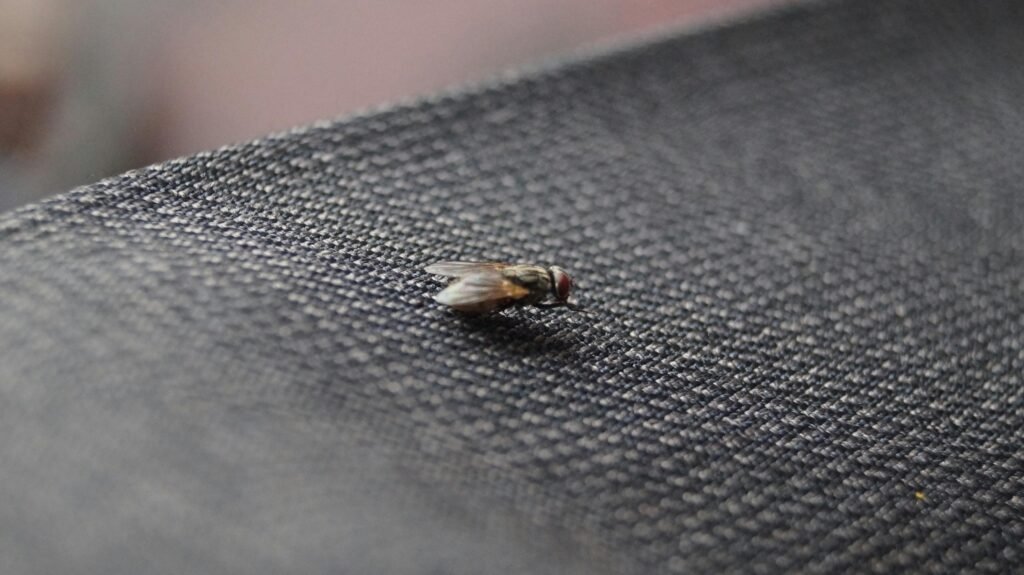American Cockroach (Periplaneta americana) – Complete Guide
 The American cockroach (Periplaneta americana) is one of the largest and most resilient household pests. Despite its name, this species is not originally from North America but was introduced from Africa centuries ago through maritime trade. Today, it is a global nuisance and is especially problematic in urban environments.
The American cockroach (Periplaneta americana) is one of the largest and most resilient household pests. Despite its name, this species is not originally from North America but was introduced from Africa centuries ago through maritime trade. Today, it is a global nuisance and is especially problematic in urban environments.
Unlike the smaller German cockroach (Blattella germanica), which thrives in kitchens, the American cockroach prefers basements, sewers, boiler rooms, and other warm, damp areas. Its impressive size, reddish-brown color, and fast running speed make it a distressing sight for homeowners and businesses alike.
This article explores the biology, identification, risks, and control strategies for the American cockroach, offering practical insights for pest management and prevention.
Identification
Recognizing Periplaneta americana is straightforward because of its size and color.
Size: Adults reach 34–53 mm in length, making them among the largest household cockroaches.
Color: Reddish-brown with a distinctive pale yellow band around the pronotum (shield behind the head).
Wings: Fully developed in both sexes, extending beyond the abdomen. Adults can glide short distances.
Nymphs: Smaller, wingless, darker brown with developing wing pads.
Egg Cases (Oothecae): Dark brown, 8–10 mm long, containing about 16 eggs each.
Compared to the Oriental cockroach (Blatta orientalis), the American cockroach is larger, more mobile, and more likely to infest commercial kitchens and sewer systems.
Biology and Ecology
The American cockroach has a life cycle and set of habits that allow it to adapt to diverse environments.
Life Cycle:
Females produce oothecae every few days, attaching them to hidden surfaces.
Eggs hatch in 6–8 weeks.
Nymphs undergo 10–13 molts before reaching adulthood, a process that may take 6–12 months.
Adults live up to 2 years.
Feeding Habits:
P. americana is omnivorous and scavenges on:Food scraps and grease.
Paper, glue, and fabrics.
Organic waste, including garbage and decaying matter.
Pet food left overnight.
Environmental Preferences:
Warm, humid conditions (ideal around 29°C).
Sewers, boiler rooms, crawl spaces, basements, and drains.
High moisture areas in restaurants, hospitals, and warehouses.
Global Distribution
Although its common name suggests otherwise, the American cockroach originated in Africa. Maritime trade allowed it to spread globally:
North America: Widespread across all states, particularly in southern and urban regions.
Europe: Common in major cities with older infrastructure.
Asia: Found in India, China, Japan, and Southeast Asia, thriving in warm climates.
Africa and South America: Abundant in tropical and subtropical areas.
Oceania: Well established in Australia and surrounding islands.
Its close association with human settlements ensures its survival across a wide range of climates.
Risks and Damage
American cockroaches are more than just a nuisance; they pose real risks to human health and property.
Disease Transmission: They spread bacteria like E. coli and Salmonella.
Allergens: Their droppings, saliva, and shed skins can trigger asthma and allergies.
Food Contamination: Roaches crawl over garbage and then contaminate food-preparation surfaces.
Property Damage: They feed on book bindings, fabrics, wallpaper, and cardboard.
Psychological Stress: As with bed bugs (Cimex lectularius), their presence causes significant anxiety.
Signs of Infestation
Live Cockroaches: Large, reddish-brown insects seen in basements, kitchens, or sewers.
Droppings: Resembling mouse droppings, but with blunt ends and ridges.
Oothecae: Egg cases hidden near food sources, cracks, or furniture.
Odor: A strong, musty smell in heavy infestations.
Smear Marks: Dark marks along walls or baseboards in moist areas.
Control Methods
There are various chemical and non-chemical methods used for cockroach control.
1. Sanitation
Keep kitchens and food storage areas clean.
Eliminate garbage quickly.
Fix leaky pipes and remove standing water.
2. Exclusion
Seal cracks and crevices.
Install drain covers and door sweeps.
Improve ventilation in basements and crawl spaces.
3. Chemical Control
Gel Baits: Placed in cracks, corners, and damp areas.
Residual Insecticides: Applied to baseboards and entry points.
Dusts: Boric acid or diatomaceous earth in hidden voids.
4. Professional Pest Management
Because infestations often involve large sewer populations, licensed exterminators may be needed to apply advanced control measures.
Advanced Approaches
Integrated Pest Management (IPM): Monitoring, sanitation, baits, and targeted insecticides combined.
Biological Control: Research has tested fungi (Metarhizium anisopliae) and parasitoid wasps against cockroach populations.
Traps with Pheromone Lures: Useful for monitoring infestations in commercial spaces.
Vacuuming: Effective in sensitive environments such as food processing plants.
Cultural and Historical Context
Cockroaches have long been symbols of resilience and survival.
In folklore and literature, they represent endurance in harsh conditions.
The American cockroach, due to its size and ubiquity, is often used in horror films and urban legends to evoke disgust.
Unlike honey bees (Apis mellifera), which are admired for their ecological role, cockroaches remain universally disliked, although scientists respect their adaptability.
FAQ
Q1: Are American cockroaches dangerous?
Yes. They spread bacteria, trigger allergies, and contaminate food.
Q2: How do I identify an American cockroach?
Look for large reddish-brown insects with a pale band around the pronotum.
Q3: Do American cockroaches fly?
Yes, adults can glide short distances, especially in warm environments.
Q4: Where do American cockroaches live?
They prefer warm, damp areas like sewers, basements, and boiler rooms.
Q5: How can I eliminate American cockroaches naturally?
Boric acid, diatomaceous earth, and proper sanitation reduce populations.
Q6: Why are American cockroaches so hard to control?
Their size, mobility, and wide range of hiding places make infestations difficult to eliminate without professional help.
Final Thoughts
The American cockroach (Periplaneta americana) is not only one of the largest household cockroaches but also one of the most persistent. Its ability to survive in sewers, basements, and commercial kitchens makes it a serious threat to food safety and public health. Unlike smaller species such as the German cockroach (Blattella germanica), American cockroaches are more mobile, live longer, and adapt well to harsh environments.
Effective control depends on a multi-layered approach: sanitation to remove food and water sources, structural exclusion to block entry points, and targeted insecticide use. For homes and businesses struggling with large infestations, professional pest management is often the only reliable solution.
Although feared and despised, P. americana represents one of nature’s most adaptable survivors. Understanding its biology and habits not only helps in managing infestations but also reminds us of how urban environments create opportunities for pests to thrive.
Learn more about other Urban & Indoor Pests that affect our houses and buidings.
Disclaimer
This article is for informational purposes only. Pest control laws and approved chemicals vary by country. For best results and legal safety, we strongly recommend contacting a licensed pest control professional in your local area. Always make sure that the pest control technician is properly certified or licensed, depending on your country’s regulations. It’s important to confirm that they only use approved products and apply them exactly as instructed on the product label. In most places in Europe, UK, or USA, following label directions is not just best practice—it’s the law.
Author Bio
Nasos Iliopoulos
BSc Agronomist & Certified Pest Control Expert
Scientific Director – Advance Services (Athens, Greece)
Licensed Pest Control Business – Ministry of Rural Development & Food (GR)
References
University of Maryland - American cockroaches
Wikipedia - American Cockroaches


